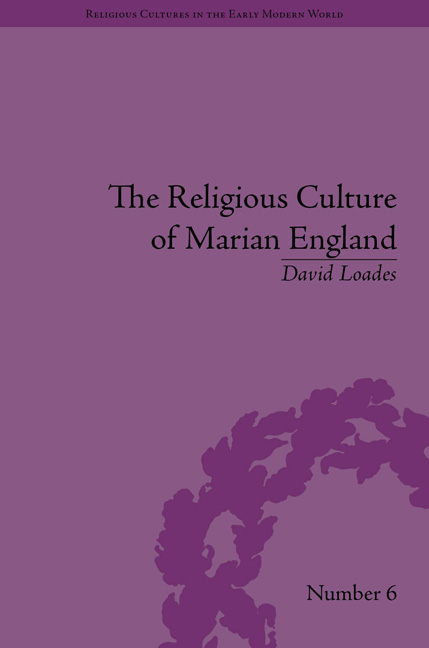Book contents
1 - The Structures of Coercion
Summary
The Church was well placed to coerce dissidents, both because of the legal structure of which it was a part and because of the pervasive culture of conformity. To some extent these forces had been pulling in different directions under Edward. The law required obedience to a magisterial form of Protestantism but most clergy, and most congregations, preferred something a great deal more conservative. These laws, of course, dated only from 1549, but the expectation that all parishioners would attend their parish church, and receive such sacraments as were available to them, went back to the origins of the parochial system in the eighth century. It was, first and foremost, the responsibility of the incumbent to see that this happened, and his eyes and ears in this respect were the churchwardens. However the sanctions available to him were limited. If the offender yielded to exhortation and reprimand, and came to confess his or her faults, then a suitable penance could be imposed. However, if any person failed to appear at all, or declined to submit to penance, then the incumbent had little option but to refer him to a higher jurisdiction, and that would mean the court of the archdeacon.
The archdeacon was a ubiquitous presence in late medieval society. He exercised the bishop's authority by delegation and intruded into every situation where the canon law reached. Matrimonial problems, illicit sexual relationships and the closely related issues of defamation and slander all came before him. Matters arising out of disputed wills and the prosecution of those who meddled with dead men's goods were equally his concern. He pursued the non-payment of tithes and other Church dues, and punished those who showed the slightest desire to question the teachings of the Church. His visitation was one of the most predictable features of Church life, and one of the few ways in which disputes between incumbents and their flocks could be resolved.
- Type
- Chapter
- Information
- The Religious Culture of Marian England , pp. 17 - 32Publisher: Pickering & ChattoFirst published in: 2014



